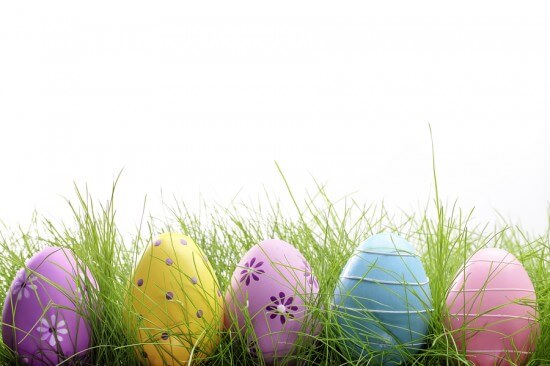
The origins of the modern Easter Egg is not exactly clear, but there are a few different sources from which it might have come:
1) The feast of Eostre. During, and prior to, the 1600s the German Anglo-Saxons celebrated spring, and new life with a big feast dedicated to the goddess of fertility and spring time, Eostre. It was believed that she was responsible for their spring crops, and would determine the fertility of the women and animals. The rabbit, hence the Easter Bunny, was the earthly incarnation of Eostre and the egg is recognized as a symbol of the start of new life. Thus rabbits and eggs were blended into the celebration of Eostre. When the Anglo-Saxons converted to Christianity, many of their pagan celebrations and traditions were morphed or combined with Christian celebrations. The celebration of Eostre was one of these.
Because the feast for Eostre was held on the Vernal Equinox, around March 21st, and because it coincided so well with the Christian date of celebrating the resurrection of Christ, the two were combined. As the rebirth of land in spring was symbolized with the egg, it became a part of the Christian celebration of Easter.
2) The egg is a universal symbol for the start of new life and, since Easter is the celebration of Christ’s resurrection, the egg was a natural symbol to incorporate into what would become Easter. When a chick emerges from an egg, it ends one phase of life, as an embryo, and starts another. When the earth blooms in spring, it ends one life and starts another. Therefore, the egg, as a symbol of new life, fits well with most of the Easter traditions.
3) Eggs were also part of the Jewish traditions for Passover. At the Jewish Passover Seder, a hard-boiled egg dipped in salt water symbolizes the festival sacrifice offered at the Temple in Jerusalem.
As you can see, the Easter egg can claim origin from a number of different sources; it is an important part of many traditions. Today’s incorporation of the Easter egg, including painting eggs bright colors, decorating eggs and hunting for them, as well as the Easter Bunny bringing them to children, is a mix of many traditions. When Christianity came to Germany, Pope Gregory the Great ordered his missionaries to absorb old religious sites and festivals into Christian rituals where possible. Thus, the Christian celebration of the Resurrection of Christ became a melting pot of various springtime holiday traditions as it was so ideally suited to be merged with other holidays that were close to its celebration date. Many other cultures celebrated during the Spring Equinox. Thus many of the traditions were adopted into the Christian festivities of Easter, particularly those of the feast of Eostre.

who was the first person(s) to discover the easter egg? this does not say!!!!